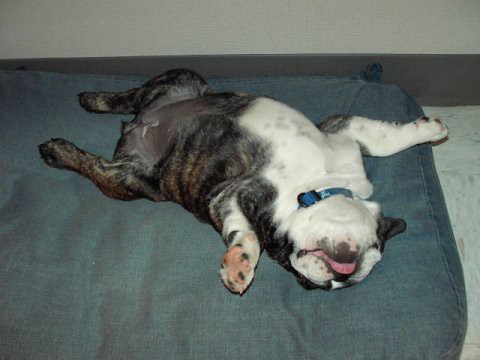For the last 26 days my averge daily IOP has been below 15 in my right eye. Given that my right eye tends to have higher IOP, I have been very happy with these numbers. Our plan was to continue this for 30 days (at least) before making any changes in my routine.
However, today something unplanned happened and as a result my IOP broke above the highs of the last 26 days. From around 9 AM to around 6 PM I suffered from nausea. I may have had a stomach virus or I may have had food poisoning - I don't know. I could not stand up for more than about 1 minute. My nausea was better when I was lying down, but I could not stand up even long enough to complete my usual orthostatic heart rate variability test. However, the attempt I made to do this test is interesting. In the orthostatic heart rate variability chart (click link for full size) shown below, my typical heart rate curve is shown in blue and today's heart rate curve is shown in red. Notice how elevated my heart rate is. I presume this is from the stomach virus or whatever I had.
As I said, my nausea was better when I was lying down. I really had no choice because I could not even stand up or sit up without getting sick. Around 4 PM I started feeling a little better and I had an IOP check.
Over the course of about 10 minutes, the IOP values in my right eye were: 22 21 21 23 25 23 22 23 22
I used one drop of timolol maleate 0.25% in my right eye after those measurements were obtained. Even with the extra medication, my overall average IOP values for today were:
Left 14.0; Right 16.1
 That's not too bad I suppose, but it is the first time in the last 26 days that my average IOP has been above 15. And more importantly, it appears that my IOP in my right eye was 21 and above from 11 AM to after 4 PM.
That's not too bad I suppose, but it is the first time in the last 26 days that my average IOP has been above 15. And more importantly, it appears that my IOP in my right eye was 21 and above from 11 AM to after 4 PM.
The issues this raises for me are:
- Postural changes may be a much more important issue for me than previously thought. Recently I have seen discussions of the importance of postural changes in normal tension glaucoma (NTG). I don't have NTG. Could postural changes be significant in other forms of glaucoma? For me, the answer seems to be yes.
- Continuing to investigate my IOP during sleep may be important. I have tested it a few times and the intraocular pressure results while sleeping have been mixed. Some times my IOP is not elevated when I wake up in the middle of the night. Other times it is. Although in the last 26 days, when I check my IOP upon awakening it is not as high as it was today around 4 PM after lying down. It seems that lying down during the day raising my IOP more than sleeping at night (but I don't have enough data to make a strong statement about that.)
- Even when my IOP seems to be very well controlled, as it has been the last 26 days, small things can still elevate it to a "dangerous" level.
For those of you with normal tension glaucoma, you might want to find out more about your IOP under different conditions in your life. If your IOP fluctuates as much as mine does, you might gain new insights into managing your glaucoma.
For me, today underscores the benefit of monitoring my IOP regularly. Since I was diagnosed with glaucoma, my vision has remained fairly stable with the exception of two periods. Once I had a severe leg injury and I was in bed for a couple weeks. During those weeks my vision declined noticably. That was before we began this IOP project, so I do not know what my IOP was.
The only other time I have noticed a decline in vision was during a 10 day spa treatment where I meditated a lot and spent a lot of time lying down for massages or resting. I lost a significant amount of vision during these 10 days. Of course that vision loss has been permanent, so it is a serious thing. I have not noticed any vision loss at any other times since I was diagnosed with glaucoma.
Today gives me some insight into why I may have lost so much vision during these two periods. Given that my average IOP was around 20 -- under good conditions -- back then, I can speculate that spending all day lying down would send my IOP above 30. My doctor's are not convinced, but here is a situation where only I can appreciate the significant amount of vision I lost during those two periods. If I ever find myself in similar circumstances, you can believe I will monitor my IOP closely!
- dave's blog
- Log in or register to post comments


